Ever pictured saber-toothed cats as fierce, oversized jungle tigers with massive fangs and a bad attitude? Think again! The real story of these prehistoric felines is wilder, weirder, and way more surprising than you’d ever imagine. Let’s unravel the myths and discover the saber-tooth’s true nature—one jaw-dropping fact at a time.
Not Actually a Tiger—Or Even a “Cat” as We Know It

Despite their fearsome nickname, saber-toothed cats weren’t tigers or even close relatives. They belonged to a distinct and ancient lineage known as machairodonts, which diverged from the ancestors of modern cats millions of years ago. No stripes, no tiger-like growl—just a wildly different branch on the feline family tree, shaped by unique adaptations and hunting styles. These cats carved their own path in prehistoric ecosystems, separate from the big cats we know today.
Those Iconic Fangs Were Surprisingly Fragile

They may look terrifying, but the saber-tooth’s iconic fangs were surprisingly fragile. Long, flat, and razor-sharp, these canines weren’t made for bone-crunching battles—they were precision tools, perfect for slicing through soft flesh with surgical finesse. Think less wrecking ball, more carving knife at a prehistoric Thanksgiving feast. Despite their size, those teeth were all about finesse over brute force.
Built More Like a Bear Than a Lion

Forget the image of sleek, high-speed hunters—saber-toothed cats were built like tanks, with barrel-chested bodies, thick necks, and stout, muscular limbs. Imagine a bear disguised as a cat, not a graceful panther darting through the trees. Their power-packed build was perfect for stealthy ambushes and grappling large prey, not for long chases. These were not sprinters—they were heavyweight bruisers waiting for the perfect moment to strike.
Lived Side-by-Side with Early Humans

Imagine glancing out your window and spotting a saber-toothed cat padding through your backyard—massive fangs glinting in the sunlight. These formidable predators once roamed the Americas during the last Ice Age, sharing the land with mammoths, giant ground sloths, and even early humans. It’s wild to think our distant ancestors may have crossed paths with them, eyes wide with a mix of awe and terror. That backyard stroll? It could’ve been a scene straight from prehistory.
Loved a Good Group Hang—Not Lone Rangers

Contrary to the classic image of the solitary saber-toothed assassin, fossil evidence hints that these ancient predators may have lived and hunted in groups—much like modern lions. Social living would’ve given them a major edge, allowing packs to coordinate attacks on massive prey like mammoths and protect their vulnerable young. These weren’t just killers—they were family units, working together to survive the brutal Ice Age. It adds a whole new layer to their fearsome reputation: strength in both tooth and teamwork.
Puppy Eyes and Purrs—They Cared for Each Other

Fossil evidence shows that saber-toothed cats may have cared for injured or sick group members—an extraordinary trait among big predators. Healed bones and signs of long-term survival suggest these cats didn’t abandon their own, even when survival was tough. This rare compassion points to strong social bonds, more like a tightly knit lion pride than a competitive wolf pack. It paints a surprising picture of saber-tooths not just as killers, but as caretakers too.
Babies Had Tiny, Stubby Teeth

Saber-toothed kittens didn’t arrive in the world with those iconic fangs fully formed—instead, their deadly canines grew in gradually over time. For much of their early life, they sported adorable, stubby smiles that were more playful than fearsome. Picture a fluffy little predator with a gap-toothed grin, pouncing clumsily on siblings in practice hunts. It’s a surprisingly cute stage in the life of one of history’s fiercest cats!
Couldn’t Open Their Mouths Wide All Day

Saber-toothed cats had jaws that could gape an astonishing 120 degrees—far wider than any modern big cat. But contrary to dramatic illustrations, they didn’t stroll around with their mouths hanging open all day. That extreme jaw flex was reserved for the moment of attack, when precision and power mattered most. Keeping their jaws open nonstop would’ve been tiring—and probably a bit drooly!
Short Tails, Not Long and Swishy

Unlike today’s big cats, saber-toothed cats had short, stubby tails that made them look more like bears than sleek panthers. This compact tail helped with stability and balance during sudden, explosive leaps—perfect for ambushing prey rather than chasing it down. They weren’t built for long sprints but for powerful pounces from the shadows. Forget elegant tail-flicks—these ancient predators were all about brute force and surprise.
They Weren’t the Top Predator

Despite their fearsome reputation, saber-toothed cats weren’t always top of the food chain. They shared their Ice Age world with formidable rivals like dire wolves and massive short-faced bears—predators that could challenge or even overpower them. Fossil evidence suggests these cats sometimes had to battle for scraps or back off to avoid becoming a meal themselves. Even the fiercest hunters had to pick their battles carefully in such a dangerous world.
Preferred Big, Slow Meals

Saber-toothed cats were the heavyweight hunters of their time, specializing in taking down massive, slow-moving prey like mammoths, bison, and giant ground sloths. Unlike today’s leopards that chase nimble deer, these predators relied on stealth and power to ambush creatures too big or bulky to escape fast. Their killing style was all about precision and brute force, not high-speed chases. In the Ice Age arena, they were built to tackle titans, not sprinters.
Clumsy Runners—But Deadly Pouncers
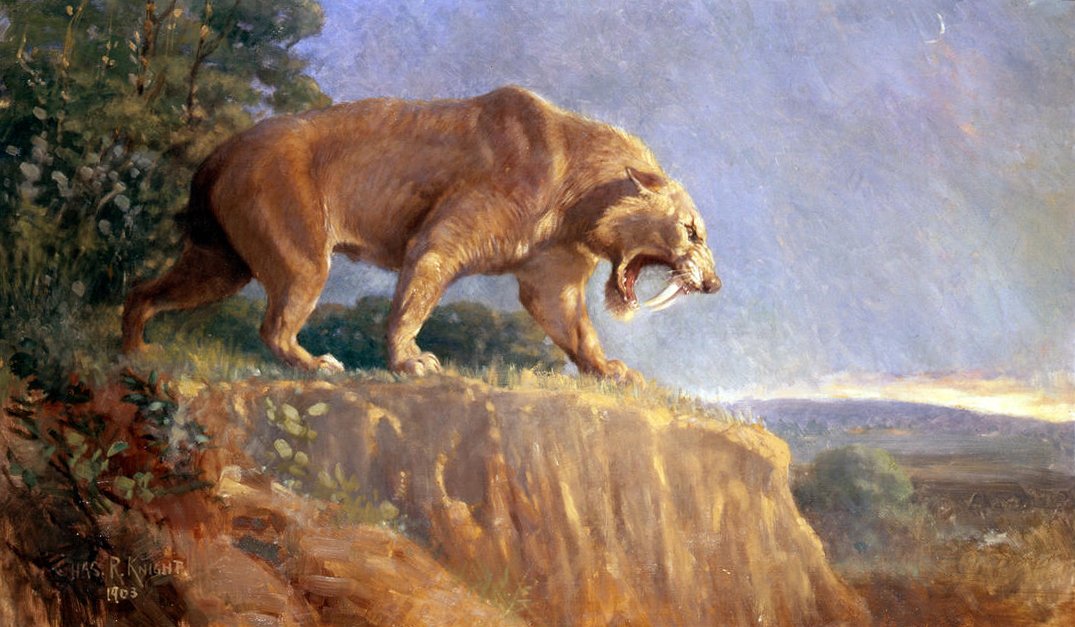
With short, powerful limbs and stocky builds, saber-toothed cats weren’t designed for sprinting across open plains. Instead, they mastered the art of the ambush—creeping close, then launching a brutal, explosive attack before prey had time to react. Their hunting style was all about patience and power, not speed. Picture a heavyweight wrestler crouched in the shadows, ready to strike—not a sleek track star in full sprint.
More Purr Than Roar

Some scientists believe saber-toothed cats may have purred instead of roared, based on clues in their skull and vocal anatomy. If true, that means these Ice Age predators communicated more like a giant housecat than a thunderous lion. Picture a deep, rumbling purr echoing through the frozen darkness—a surprisingly gentle sound from such a fearsome hunter. It adds an eerie twist to their legend: not all monsters roar.
Surprisingly Vulnerable Teeth in a Fight
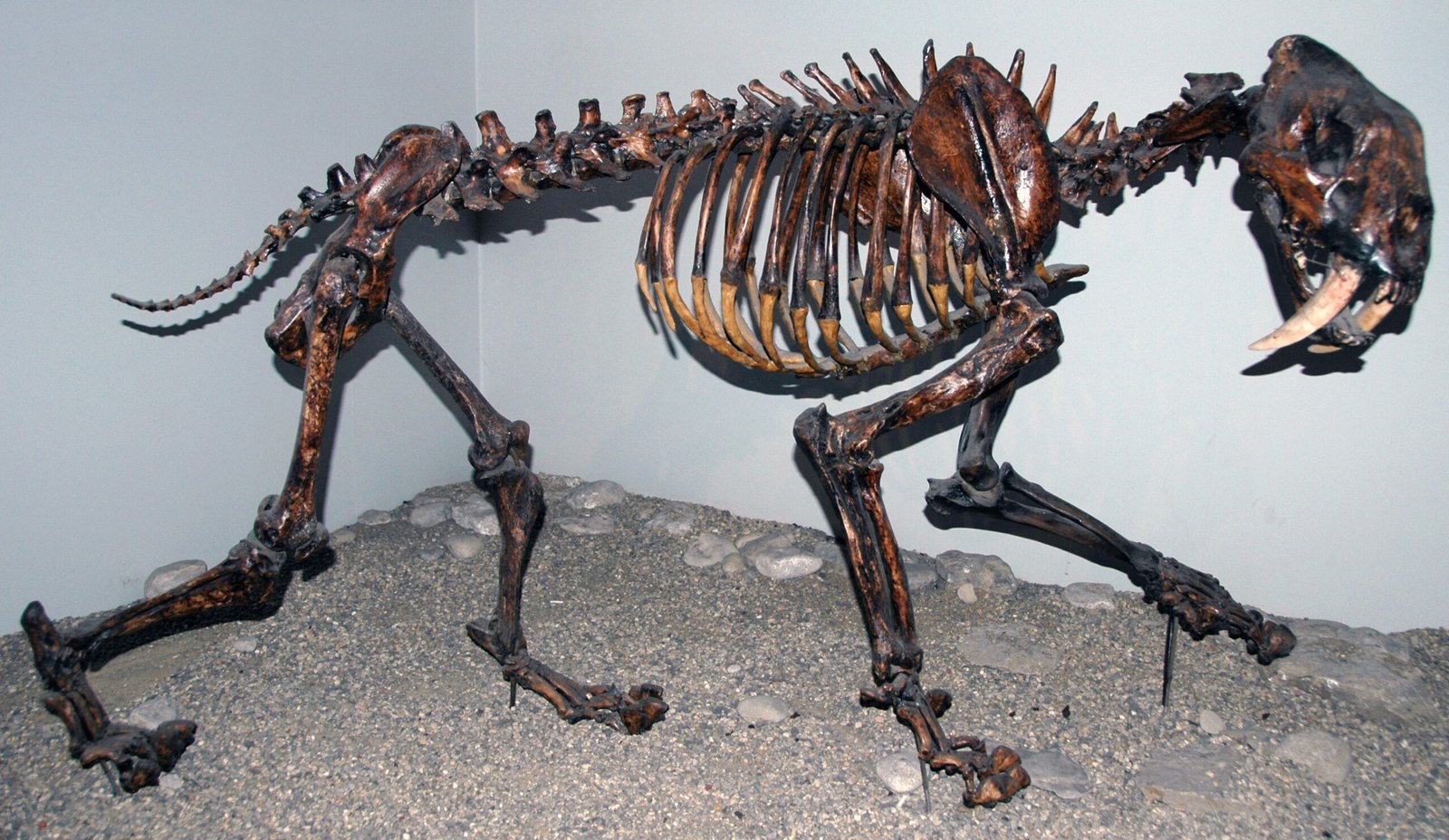
Those giant saber-like canines were the ultimate showstoppers—but also a dangerous gamble. While perfect for slicing into soft flesh, they were fragile and could snap in a fierce struggle. A broken fang meant trouble, possibly ending a cat’s ability to hunt and survive. Every fight, every bite, came with high stakes in the deadly game of survival.
Short Life Spans—Not Ancient Elders
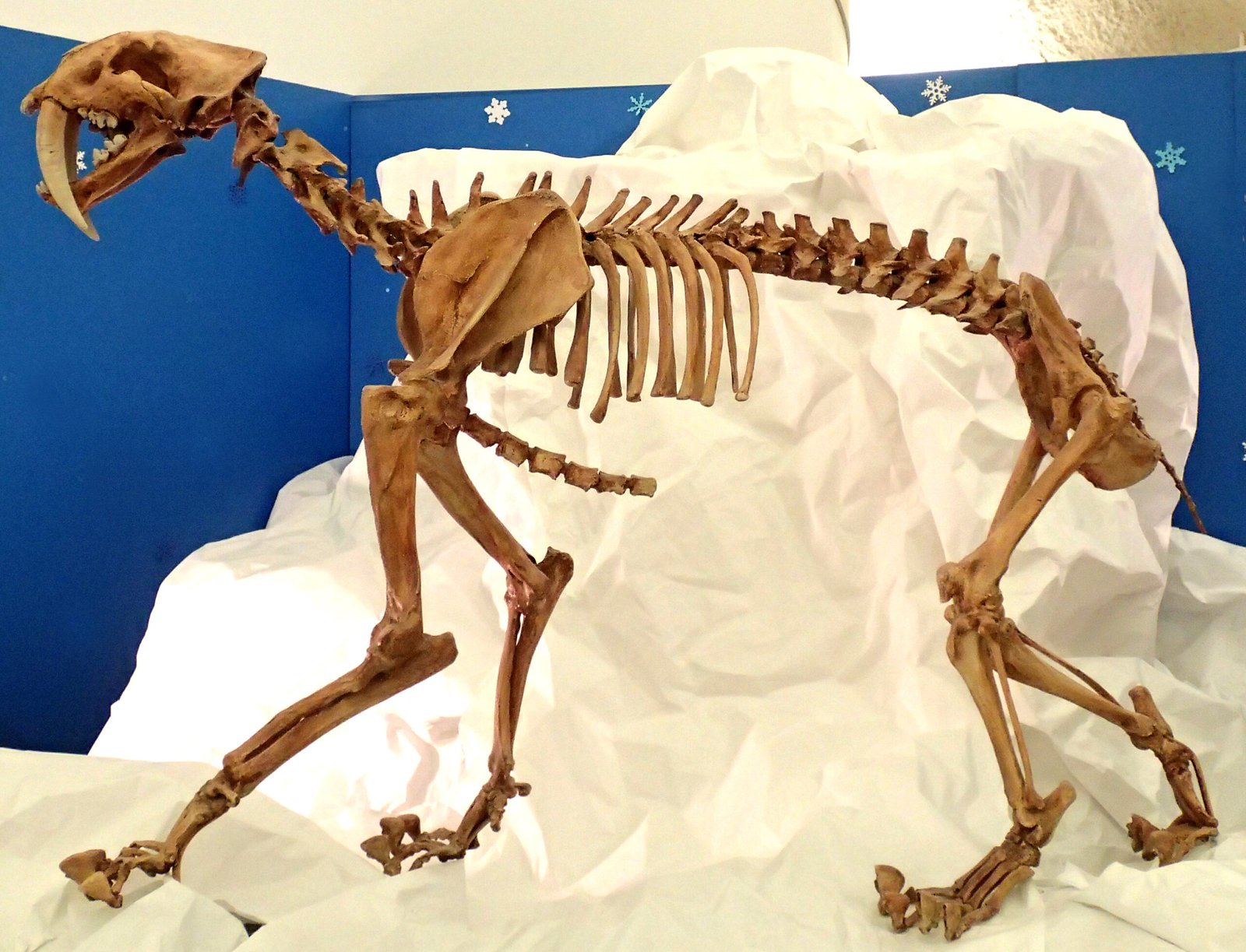
Despite their fearsome reputation, saber-toothed cats led short, brutal lives. Most didn’t survive beyond a few years, facing constant threats from injury, harsh Ice Age climates, and fierce competition for food. Many fossils bear the marks of healed wounds—scars etched in bone that tell stories of resilience and struggle. These cats were survivors, but survival came at a steep cost.
Regular Victims of Tar Pit Traps
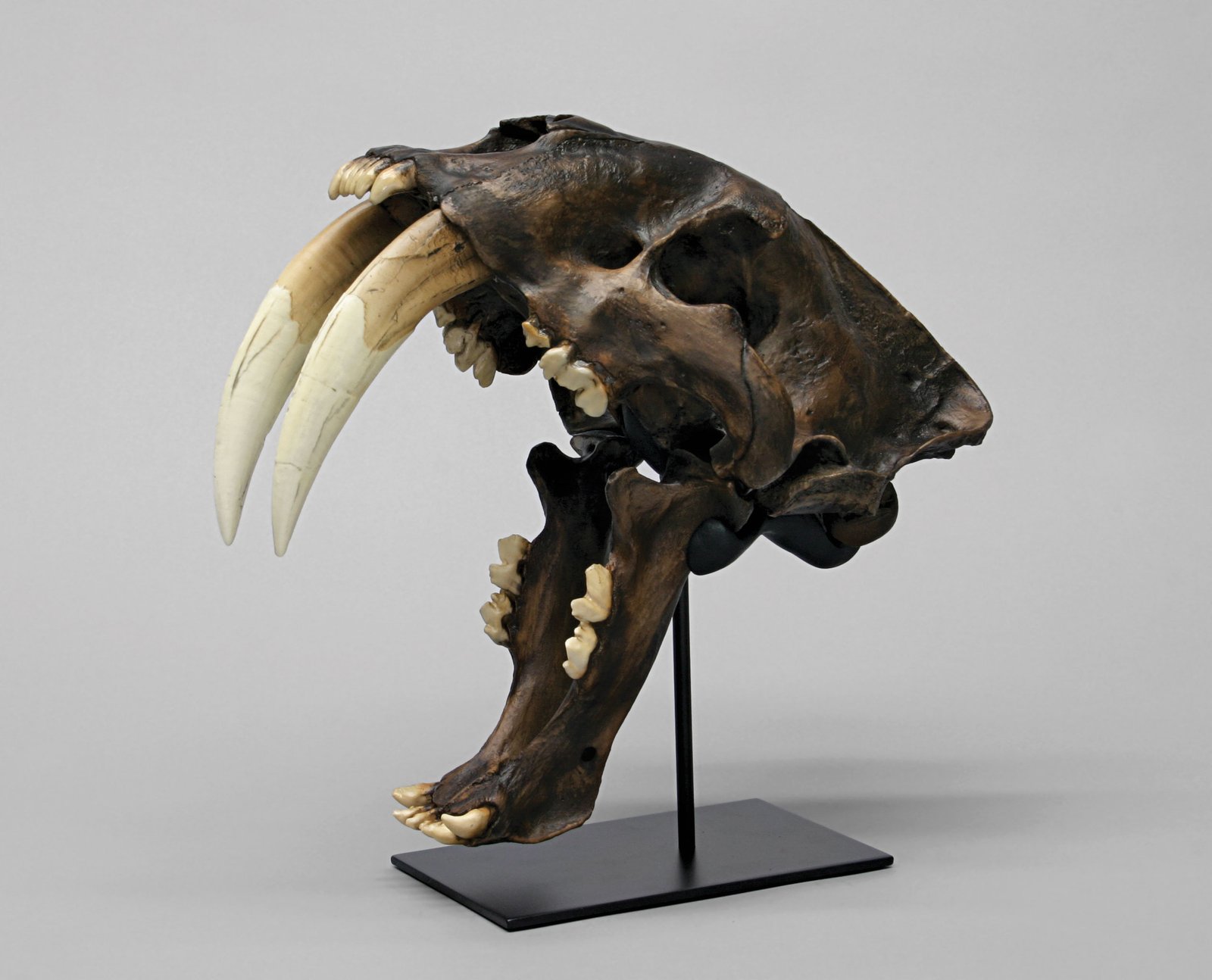
Many saber-tooth fossils have been unearthed from ancient tar pits, where the predators met a sticky end while trying to feast on trapped prey. Drawn in by the struggling animals, they often got caught themselves—turning hunters into victims. These fossil sites offer a snapshot of Ice Age life, frozen in time. It’s a powerful reminder that even top predators weren’t immune to the dangers of their world.
They Had a Weak Bite

Surprisingly, saber-toothed cats had a much weaker bite force than today’s lions or tigers—nowhere near the bone-crushing power you might expect. Instead of brute strength, they relied on precision, using their long canines like surgical daggers to pierce vital spots. This made them highly specialized hunters, adapted for quick, lethal strikes rather than overpowering force. In the world of predators, they were more finesse than fury.
Not Just North American—They Were Global

Saber-toothed cats weren’t just a North American phenomenon—their fearsome relatives prowled across Europe, Asia, and Africa as well. From the frostbitten plains of Eurasia to the sunbaked savannas of Africa, each species had its own unique take on the saber-tooth toolkit. Some were built for speed, others for ambush, but all shared those signature blade-like fangs. At one point, the world teemed with these wild-toothed wonders, turning every continent into a prehistoric predator’s playground.
Noisy Neighbors—They May Have Been Quite Vocal

Fossil evidence, including skull and vocal tract structure, suggests that saber-toothed cats may have been surprisingly vocal, using deep growls, sharp calls, or rumbling roars to communicate with their group. These sounds could’ve warned rivals, rallied pack members, or soothed their young. Picture an Ice Age savanna alive with the eerie, thunderous chorus of saber-toothed cats calling through the mist. It wasn’t just a hunt—it was a soundtrack of survival.
Outlived by Many Modern Cats

While the mighty saber-toothed cats disappeared around 10,000 years ago, their smaller, more adaptable relatives—like cheetahs and cougars—managed to endure. These survivors weathered climate shifts, habitat changes, and human expansion, proving that agility and versatility often outlast brute strength. Today’s big cats carry the torch of their ancient lineage, sleek reminders of a once-wilder world. Evolution favored the flexible over the fearsome.
Cozy Fur Coats for the Ice Age Chill

Saber-toothed cats likely sported thick, insulating fur, perfectly suited for the icy winds and snowy landscapes of the Ice Age. Rather than sleek, sun-drenched stalkers, imagine them as burly, frost-covered predators wrapped in nature’s version of a parka. With dense coats and muscular builds, they blended survival and style in a frozen world. Think less jungle cat, more snow beast with fangs.
Some Species Were Tiny!

Not all saber-toothed cats were towering predators—some were surprisingly petite, about the size of a modern bobcat. These mini sabers had slender fangs and likely lived quiet, elusive lives in dense forests or brush. They were the stealthy shadows of the saber-toothed world, masters of ambush on a small scale. Imagine a fierce little feline with dagger teeth, small enough to fit in your backpack—prehistoric, but pocket-sized!
Fossils Reveal a Colorful History
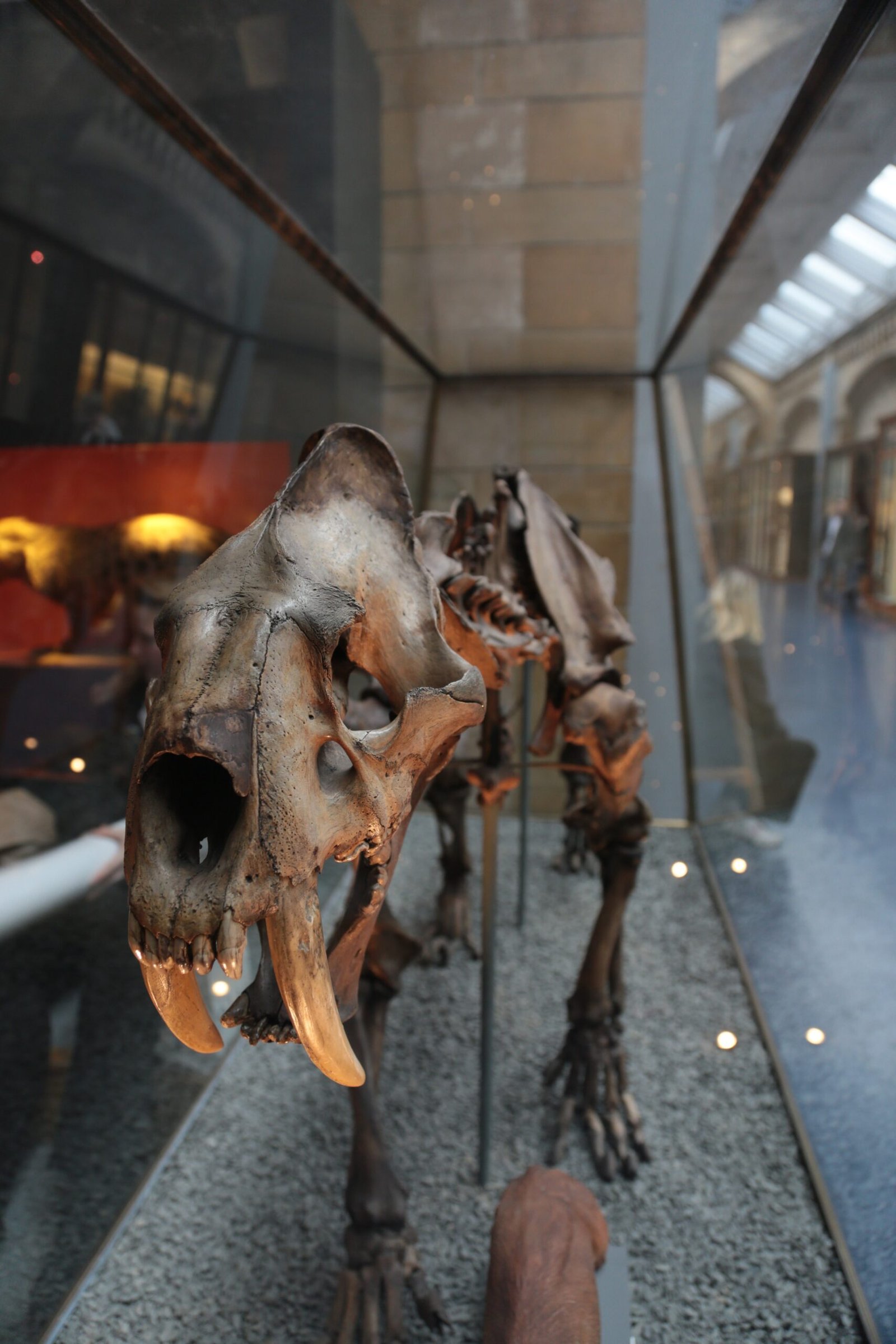
From sticky tar pits in California to the icy reaches of frozen tundras, saber-toothed cat fossils have surfaced across the globe. Each fossil find is like a puzzle piece, helping paleontologists paint a richer picture of these ancient predators’ lives. These discoveries uncover everything from hunting habits to social behavior, shedding light on creatures once cloaked in mystery. With every new bone unearthed, their epic story grows bolder and more vivid.
They Inspired Ancient Myths
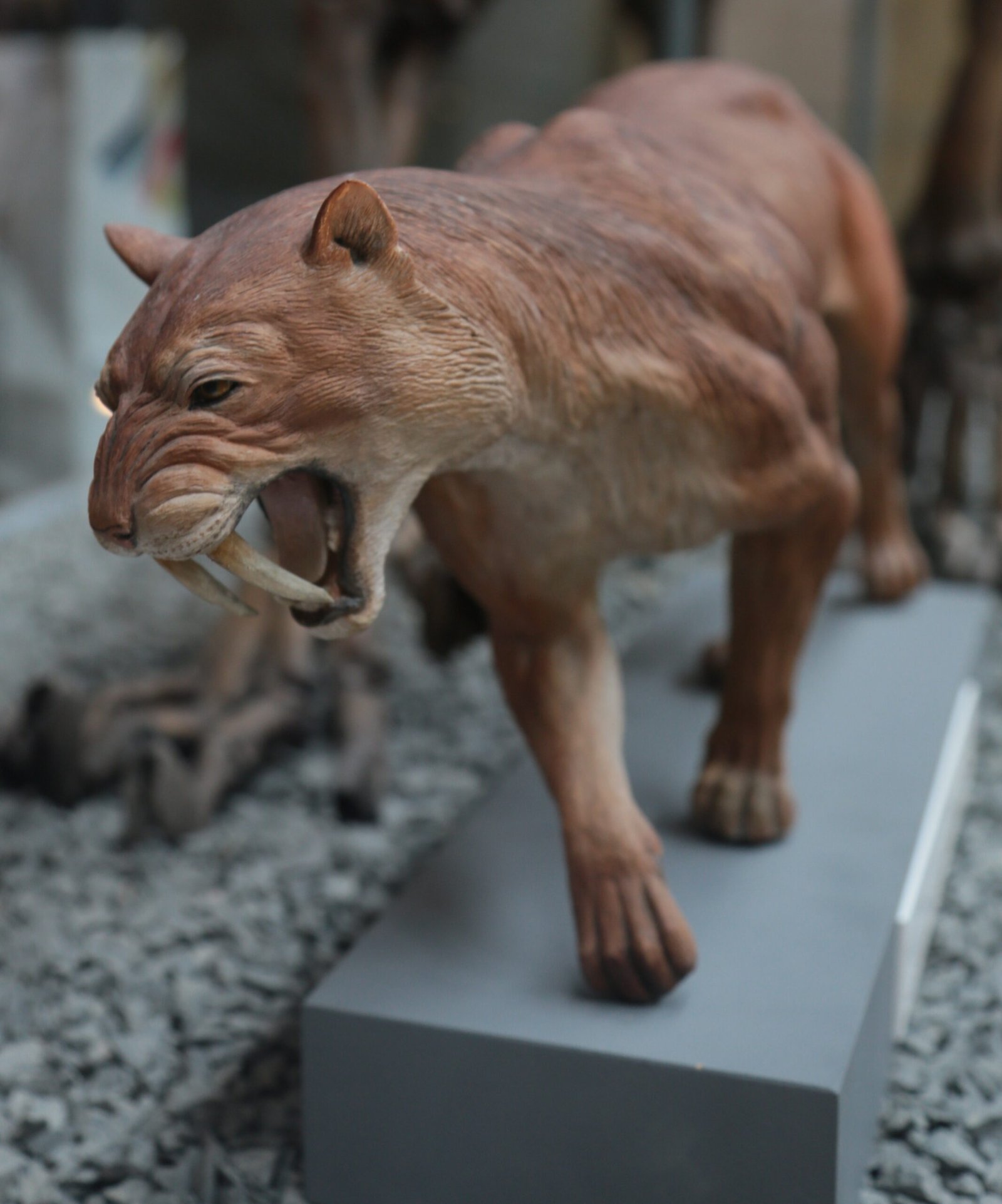
Long before paleontologists uncovered their remains, early humans likely sat around fires spinning tales of the fearsome, big-fanged beasts that roamed their world. With their massive teeth and powerful builds, saber-toothed cats may have been the original monsters of Ice Age folklore—both feared and revered. Evidence of their impact lingers in ancient cave paintings and carvings, hinting at a deep connection between predator and storyteller. These legendary cats lived not just in the wild, but in the imaginations of the first humans.
Not the Only Saber-Toothed Predator in Town
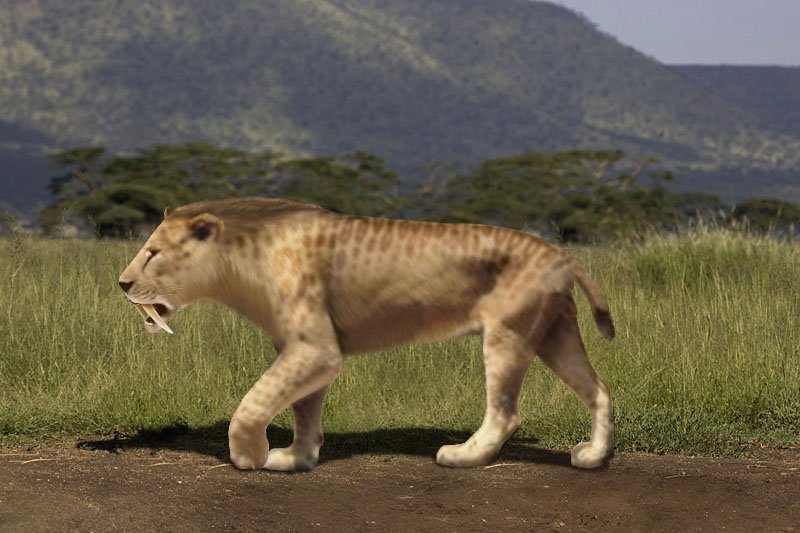
Believe it or not, saber teeth weren’t exclusive to saber-toothed cats—they evolved independently in several unrelated species, from prehistoric marsupials to bizarre ancient whales. This fascinating case of convergent evolution shows that nature has a soft spot for dramatic dental weaponry. Whenever the environment called for slicing through thick hides or displaying dominance, oversized fangs seemed to be the winning design. Apparently, nature just couldn’t resist bringing out the sabers again and again!
Pop Culture Got Them All Wrong

From blockbuster movies to Saturday morning cartoons, saber-toothed cats are often portrayed as oversized, snarling beasts with wild eyes and endless aggression. But the real animals were far more complex—social, strategic, and uniquely adapted to their environments. Their lives were shaped by harsh climates, fierce competition, and razor-thin survival odds. In truth, their story is stranger, deeper, and far more captivating than fiction ever dared to dream.
Which of these saber-toothed cats would you love to meet?

Suhail Ahmed is a passionate digital professional and nature enthusiast with over 8 years of experience in content strategy, SEO, web development, and digital operations. Alongside his freelance journey, Suhail actively contributes to nature and wildlife platforms like Feline Fam, where he channels his curiosity for the Feline into engaging, educational storytelling.
With a strong background in managing digital ecosystems — from ecommerce stores and WordPress websites to social media and automation — Suhail merges technical precision with creative insight. His content reflects a rare balance: SEO-friendly yet deeply human, data-informed yet emotionally resonant.
Driven by a love for discovery and storytelling, Suhail believes in using digital platforms to amplify causes that matter — especially those protecting Earth’s biodiversity and inspiring sustainable living. Whether he’s managing online projects or crafting wildlife content, his goal remains the same: to inform, inspire, and leave a positive digital footprint.






